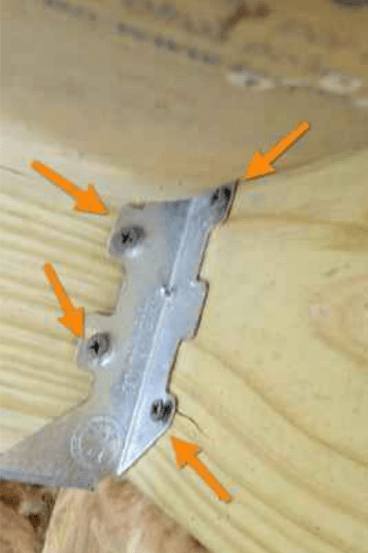Had a client reach out to me about inspecting their house. Supposedly, they have a garage converted into living space but the crawl beneath it is mostly inaccessible. Home inspector saw that many of the joists under there, which look PT from the picture he sent, are flush mounted with steel mounting brackets being attached with drywall screws instead of manufacturer specified fasteners. I see this being an issue for two reasons:
1. Corrosion of steel from the pressure treatment; drywall screws don't have any type of corrosion resistance that I'm aware of.
2. Shear capacity. I know that drywall screws are a lot more brittle in comparison to other typical screws, such as even deck screws. It's hard to find information on their allowable loads.
What are everyone's thoughts on this? Would this be enough to warrant pulling up the floor and replacing all of those fasteners? I should know more once I get out there but trying to do some preliminary research. Image attached:

1. Corrosion of steel from the pressure treatment; drywall screws don't have any type of corrosion resistance that I'm aware of.
2. Shear capacity. I know that drywall screws are a lot more brittle in comparison to other typical screws, such as even deck screws. It's hard to find information on their allowable loads.
What are everyone's thoughts on this? Would this be enough to warrant pulling up the floor and replacing all of those fasteners? I should know more once I get out there but trying to do some preliminary research. Image attached:

